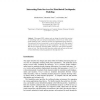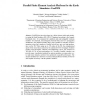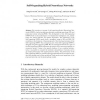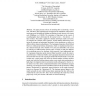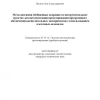91
Voted
ICCS
2003
Springer
15 years 5 months ago
2003
Springer
We present XML schemas and our design for related data services for describing faults and surface displacements, which we use within earthquake modeling codes. These data services ...
ICCS
2003
Springer
15 years 5 months ago
2003
Springer
Complex fuzzy systems exist in many applications and effective visualisation is required to gain insights in the nature and working of these systems, especially in the implication ...
89
Voted
ICCS
2003
Springer
15 years 5 months ago
2003
Springer
Abstract. GeoFEM has been developed as a finite element solid earth simulator using the Earth Simulator (ES) (35.61 Tflops/peak according to the Linpack benchmark test). It is comp...
112
Voted
ICCS
2003
Springer
15 years 5 months ago
2003
Springer
Abstract. We introduce a concept of self-organizing Hybrid Neurofuzzy Networks (HNFN), a hybrid modeling architecture combining neurofuzzy (NF) and polynomial neural networks(PNN)....
85
Voted
ICCS
2003
Springer
15 years 5 months ago
2003
Springer
Abstract. This research is to design a collection of effective collective operations for the Grid scale network environment. In the Grid, several network features should be specifi...
107
click to vote
ICCS
2003
Springer
15 years 5 months ago
2003
Springer
The paper presents a theory for modeling flow in anisotropic, viscous rock. This theory has originally been developed for the simulation of large deformation processes including t...
ICCS
2003
Springer
15 years 5 months ago
2003
Springer
The Earth’s tectonic plates are strong, viscoelastic shells which make up the outermost part of a thermally convecting, predominantly viscous layer; at the boundaries between pla...
ICCS
2003
Springer
15 years 5 months ago
2003
Springer
ICCS
2003
Springer
15 years 5 months ago
2003
Springer
ICCS
2003
Springer
15 years 5 months ago
2003
Springer
In this paper we present the design of a multidisciplined problem solving environment (MPSE) for supporting an efficient prediction capability for the response of multiscale interd...
